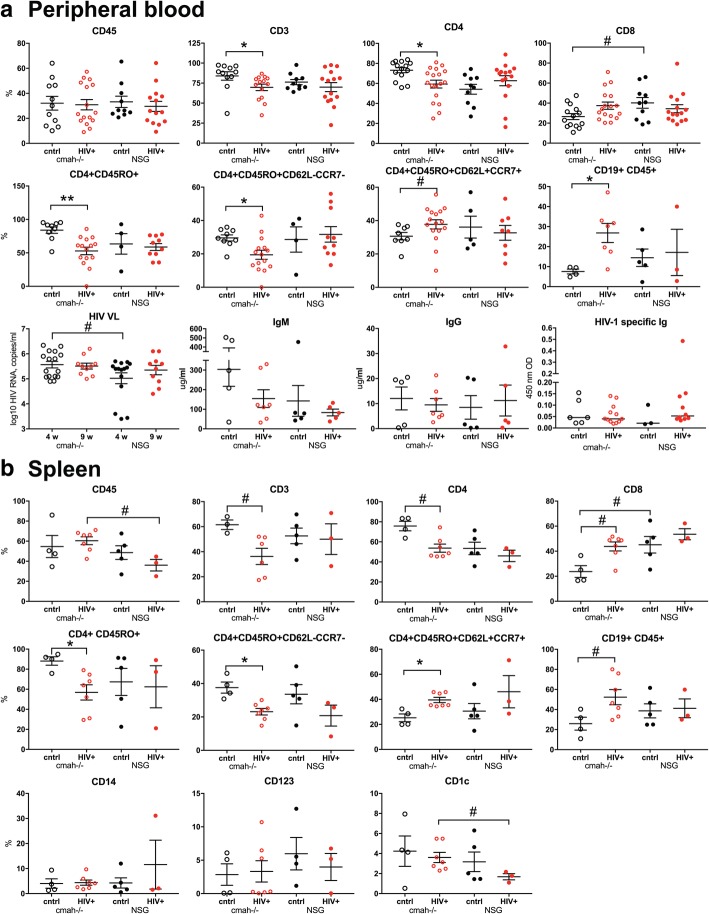Fig. 5.
Effects of the cmah−/− background on human cell responses to HIV-1 infection. NSG-cmah−/− and NSG wt mice were infected with HIV-1ADA intraperitoneally at 6 months of age. a At 4 weeks post infection, blood samples were collected for FACS analyses of the peripheral blood. The absolute numbers of human CD45+ cells in peripheral blood were similar: cmah−/− control 38.5 ± 10.4 cells/μl (n = 12); cmah−/− HIV+ 35.6 ± 9.6 cells/μl (n = 16); NSG control 30.6 ± 6.5 cells/μl (n = 10); NSG HIV+ 28.7 ± 9.0 cells/μl (n = 14). b Four to seven animals per group were euthanized for the spleen profile analysis. Bone marrow data shown on Fig. 6. FACS gating strategies were used: human CD45/CD3/CD19; CD3/CD4/CD8. For available blood samples, additional analyses for human cells subpopulations CD4/CD45RA/CD45RO/CD62L/CCR7 were done. For spleen, additional analyses included: human CD45/CD14/CD123/CD1c. Available plasma samples were analyzed for the HIV-1 RNA copies number, human IgM, IgG and HIV-1 specific antibodies at 1:10 times dilution (last panel a Individual mouse and means with SEM are shown. P values were determined with Kruskal-Wallis test and Dunn’s multiple comparisons tests (*) and Mann-Whitney test (#). P ≤ 0.05 were considered significant. Viral load at 4 weeks post infection was compared with unpaired t test with Welch’s correction. In comparison to NSG mice, NSG-cmah−/− mice showed a higher sensitivity to HIV-1 infection with increased viral load at 4 weeks post infection and a significant decrease in numbers of CD4+ T cells including effector CD4+CD45RO+CD62L−CCCR7− cells post-infection. Profiling results of animals euthanized at 9 weeks post-infection are shown in Additional file 7: Figure S7.

